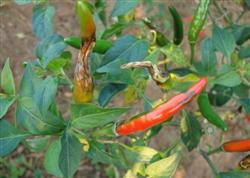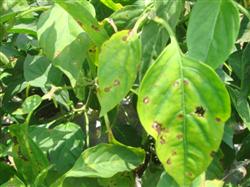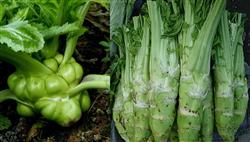How to prevent and cure anthracnose of pepper?

How to prevent and cure anthracnose of pepper? What is the anthracnose of chili pepper? Please introduce the harm of pepper anthracnose: anthracnose can not only harm pepper fruits and old leaves, but also infect stems. The main results are as follows: 1. The fruit is infected with water-stained yellow-brown round spots, the enlarged edges are brown, the center is grayish brown, and the disease spots have raised concentric patterns, which are integrated by many black or orange-red dots. 2. When the disease spot is wet, the surface of the disease spot overflows the red sticky matter, and the damaged fruit is semi-soft rotten and easy to dry and shrink. The leaves are infected, resulting in nearly round brown spots, grayish brown in the middle, and small black dots arranged in a wheel in the later stage, which leads to defoliation in severe cases. 3. The stem and fruit stalk are infected with disease, irregular short sunken brown spots appear, and the epidermis is easy to break when dry. The cause of anthracnose in pepper: anthracnose is caused by fungal infection. The pathogen is attached to the seed surface by conidia or lurking in the seed by hyphae. Sowing infected seeds will cause seedling disease. The pathogen can also overwinter in the soil with the remains of hyphae or conidia and become the source of primary infection in the next season. After overwintering, the conidia germinated and grew out of the bud tube, which invaded from the wound of the host epidermis, and a large number of conidia were reinfected after the disease. High temperature and humidity environment is conducive to the disease, low-lying, clay weight, poor permeability, insufficient fertilization or too much nitrogen fertilizer, extensive management caused by wounds, fruit exposure, etc., will aggravate the disease. Pepper anthracnose control methods: 1. Turn the soil before sowing to reduce the primary infection source. 2. Select the disease-free seeds and soak the seeds in 50 ℃ hot water for 20 minutes. 3. Reasonable close planting, so that the pepper will not be clouded between the rows and the fruit will not be exposed. 4. Properly increase the application of phosphorus and potassium fertilizer. 5. Prevent stagnant water in the field. 6. Pick the fruit in time. 7. when diseased fruit is found, it is immediately removed and taken out of the field to be destroyed. 8. Seriously diseased fields were rotated with melons and legumes for 2 or 3 years. 9. At the initial stage of the disease, spray control with 50% carbendazim wettable powder or 70% mancozeb wettable powder 500 times. Protected cultivation can be fumigated with 250 grams of 45% chlorothalonil per mu. Click to get more chili planting techniques click to get more vegetable planting techniques
- Prev

What harm does pepper anthracnose have?
What harm does pepper anthracnose have? How to prevent and cure anthracnose of pepper? Also ask netizens to help introduce the harm and control methods of pepper anthracnose, the following farming network sorted out for your reference. The harm of pepper anthracnose: black anthracnose mostly occurs on pepper fruits and leaves, especially mature fruits and.
- Next

Mustard planting: how to fertilize mustard for stem?
How to fertilize the stem with mustard? Is there anything you need to pay attention to? Ask experienced netizens to introduce the method of stem mustard (mustard) is a good crop for agricultural production in winter, but in production, it is found that once farmers transplant, do not pay attention to late topdressing, it will lead to low yield. Generally speaking, the production is 1000.
Related
- Where is it suitable to grow horseradish in China? it is expected to see the middle altitude horseradish in Alishan.
- How to prevent tomato virus disease reasonably? (Control methods included)
- Many people like to plant towel gourd on the balcony. What are the main points of this method and management?
- What crops can chili peppers be mixed with?
- Fertilization techniques and matters needing attention in Tomato
- What are the grafting techniques for peach seedlings in spring?
- Harm and control methods of root swelling disease of Chinese cabbage
- What are the pests of sweet potatoes? How to prevent and cure it?
- Symptoms, causes and Control methods of navel Rot in Tomato
- The cause of "Cucumber rotten bibcock" in Farmers' planting Cucumber and its Control Plan

